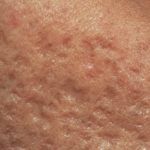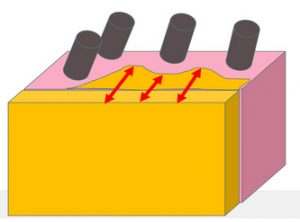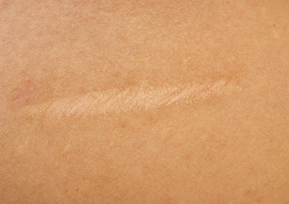It is finally summertime which means outdoor activities are on the rise. Family vacations are more frequent, kids are taking trips to the pool with friends and bike riding and baseball games are happening on a daily basis. Unfortunately, all of these fun activities come with the increased chance of injuries. During the summertime, people tend to get involved in small accidents that result in cuts, scratches and minor skin injuries which can also lead to scars.
There are a number of steps that you can take to help reduce the potential scarring that result from these small, to medium sized, accidents. According to Dr. Ellen Marmur, an associate clinical professor of dermatology at the Icahan School of Medicine at Mount Sinai Hospital in New York City, “The appearance of a scar often depends on how well your wound heals. While scars from surgery or over joints like the knees and elbows are hard to avoid, scars caused by minor cuts and scrapes can become less noticeable by properly treating your wound at home.” Dr. Marmur shared this info in a recent (June 9th) news release from the American Academy of Dermatology.
Some of the tips offered by Dr. Marmur for reducing the appearance of scars include:
• Gently wash the injury site with a mild soap and water to keep germs out and also to remove any debris from the injury.
• Apply petroleum jelly to stop the wound from drying out and then forming a scab. (Wounds that result in a scab take longer to heal and the petroleum jelly will help prevent the scar from getting too large or itchy.)
• Once you’re applied the petroleum jelly to the wound area, be sure and cover the wound with an adhesive bandage. Changing the adhesive bandage on a daily basis will help keep the wound clean while it heals.
• Depending on the size of the wound, you might need to use more than petroleum jelly to clean and care for the wound. Larger scratches and wounds could require hydrogel applied to them if they continue to have persistent redness.
Some summertime scrapes and wounds might be so severe that they require surgery. If this is the case, follow the advice of your doctor on caring for your wound. The initial care, and subsequent advice, from your doctor can help minimize the lasting impact of the scar.
One more piece of advice from Dr. Marmur involves the use of sunscreen on the wound area when you go outside. The sunscreen needs to be SPF 30 or higher to help prevent scarring. According to Dr. Marmur, no scar can be totally eliminated but most do fade over time. She also recommends seeing a board-certified dermatologist because “a dermatologist can answer your questions and talk about ways to make your scar less visible.”
Summertime can be a lot of fun but it’s also a season filled with scrapes and scratches thanks to people having rambunctious fun. The best thing you can do (besides be careful while having fun in the sun) is tend to your wound as quickly as possible. The faster you tend to your fresh wound, the less likely your chances of having a permanent scar as a reminder of the summer of 2015.

 concentrated beams of light to the area of skin while removing the skin in layers. The new skin that is formed during healing will appear youthful and tighter. This process takes about 2 weeks.
concentrated beams of light to the area of skin while removing the skin in layers. The new skin that is formed during healing will appear youthful and tighter. This process takes about 2 weeks. Scar tissue and the transection of the lower portion of hair follicles, on the edge of the scar, are what cause the lack of hair in the scar.
Scar tissue and the transection of the lower portion of hair follicles, on the edge of the scar, are what cause the lack of hair in the scar.  Scars start off by appearing red in color, which is when the blood vessels are inflamed and damaged. This part is known as hyper pigmented scars. Once a scar matures, the skin pigment will be lost and the color will change to white, which is known as hypo pigmented. Scars take approximately six to twelve months to completely heal and become white. The size, shape, and depth of the scar are all factors that contribute to how the scar will look after completely healing. In order to prevent darker scarring and infection, it is important to always keep the scar area clean and moist, during the healing process.
Scars start off by appearing red in color, which is when the blood vessels are inflamed and damaged. This part is known as hyper pigmented scars. Once a scar matures, the skin pigment will be lost and the color will change to white, which is known as hypo pigmented. Scars take approximately six to twelve months to completely heal and become white. The size, shape, and depth of the scar are all factors that contribute to how the scar will look after completely healing. In order to prevent darker scarring and infection, it is important to always keep the scar area clean and moist, during the healing process.